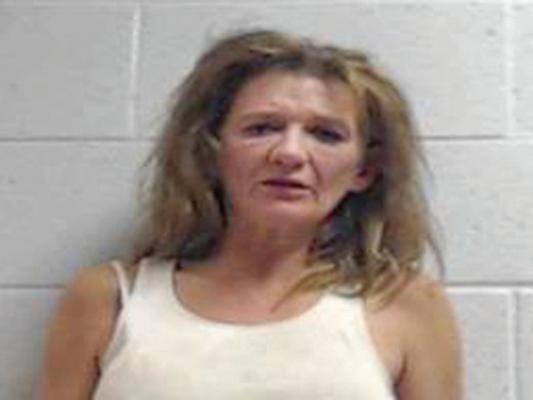Pete Kaliner returns to broadcasting BY CORY VAILLANCOURT STAFF WRITER t’s been a long, strange trip for radio host Pete Kaliner, who came into the industry just as it was beginning an era of dramatic change. In many ways, his 20-something year career in Western North Carolina broadcast journalism mirrors the ebbs and flows of the modern media waterline. “I’ve always loved radio. I love the spoken word. I love the way it connects with people and that’s where I want to be. That’s what I want to do, even though it’s a turbulent time in the industry, although I will say the opportunities right now that radio hosts have I think are far superior than they had a long time ago,” he said. “Back then you had to rely on their platform in order to broadcast. Nowadays that whole model is being disrupted.”
I
“I
— Martin Anderson, WNCW
team has had to think about how we can raise money in a delicate way that’s not insulting to people.” Another side effect of the downward national economy has been the livelihoods of professional musicians. With live concerts and festivals canceled until further notice, performers are now stuck at home without an income. Though many musicians have turned to
S EE DISRUPTION, PAGE 8
live online streaming on Facebook and Instagram (and donations via PayPal or Venmo), WNCW is also making a focused effort to showcase the talented artists and acts from around Western North Carolina and greater Southern Appalachia. “We here at the radio station are really hammering home to our listeners that we have to watch out for these artists because their whole income has dried up,” Anderson said. “I applaud the musicians that have come out right away with the live streams and also teaching online workshops to make ends meet. But, it’s not enough I’m afraid, though I’m hoping it’ll be enough to help as many artists as possible from having to give up their careers.” And yet, for Anderson and the rest of the WNCW staff, it’s been a surreal experience to be able to continue to provide its steadfast platform of music and news, something not lost on the hosts who radiate a sense of camaraderie and comfort during uncertain times. “Radio is this medium that’s kind of designed for these types of societal situations,
where we’re able to connect people and information during this pandemic isolation,” Anderson said. “It means a lot to be able to keep people company and keep them from going stir-crazy. And it’s been really gratifying to hear from our listeners who appreciate what we’re doing — this renewed awareness of the importance of radio in our lives.” For Herrington, the responsibility and importance of radio during this health crisis has conjured memories of her time studying and taking radio production classes in Argentina. “On the first day, the professor was talking about living in the Dirty War in the 1980s, and how radio was the lifeline for people who were quarantined and not allowed to go out on the streets,” Herrington said. “The radio connected people. Even during government censorship, people could catch radio signals and find out what was going on in their own country. So, this crisis right now hearkens back to the fact we’re all seeking connection and we all want to be on the same page — radio serves that purpose.” 7
Smoky Mountain News
“We here at the radio station are really hammering home to our listeners that we have to watch out for these artists because their whole income has dried up.”
— Pete Kaliner
April 22-28, 2020
think it was fourth grade, we used to have to cut current events articles out of the newspaper and write a little synopsis. After you did the assignment, you .could keep doing them for little bits of extra credit,” Kaliner said. “The teacher I had, she owas a big news junkie and so she wanted to cinspire that in us and I guess it worked.” e His dad was also an avid public radio lisstener, so while he was growing up he consumed a steady diet of “Morning Edition” eand “All Things Considered.” o “I’ve just always been in it, you know,” he c , t slive fundraisers. With listener support keepring the lights on, each station find itself at a lfinancial crossroads where the future remains unknown. , “We get by on a pretty limited budget that -has to be replenished every six months with -our fund drives, and then on a regular basis hwith our local businesses that support us. But, with the economy the way it is right now, tyou just never know what’s going to happen,” dAnderson said. “We’ve had to postpone our ,latest fund drive, which also involves a lot of svolunteers. Even though we have more people rrelying on us, we still need to make sure we can stay in the black — we’re not sure who we ecan expect to support us during this crisis.” n “There’s been a lot of innovation going on ”not just in the BPR newsroom, but also in the dbusiness department. With the pandemic, nwe started immediately reaching out to busi—nesses that support us and made sure that ,they were doing OK,” Herrington added. “But, it’s hard to ask for money in this time where everybody is freaking out about what the future will look like. And our fundraising
“We’re all under the same pressures,” he said. “You’re being told to do more with less and you have all of these streams of information coming in and as a reporter you’re trying to find different stories to cover. There’s so much out there and you’ve got fewer people covering it.”
“If you go back to the legislation, the Telecommunications Act of 1996, a lot of people in radio would tell you that the industry was completely changed after that passed,” he said. The Federal Communications Commission describes the Telecommunications Act of 1996 as the first major overhaul of telecommunications law in almost 62 years. Those 62 years saw not only rapid advances in the telephone and television industries, but also the birth of the internet. The Act’s major impact was in reducing and then dropping altogether restrictions on media companies owning multiple outlets in the same market. “It then propelled this sort of buying frenzy, which was great for a lot of small regular station owners, mom-and-pop owners that sold their operations to larger companies,” said Kaliner. “The idea was, you buy up all of these stations, you buy the best properties in each city, and then you can replicate to scale by doing essentially syndicated programming. One guy in New York is spinning records and providing content to a 100-200 stations. You save the employee costs and you can sell advertising at a huge scale.” There were a number of downsides, however, for these larger companies; they took on a lot of debt right as the downturn following the Sept. 11, 2001, attacks began to impact the U.S. economy, and just as that began to turn around, the Great Recession hit. Meanwhile, digital production and distribution — through services like YouTube and iTunes — was becoming easier and cheaper. “So I got laid off in 2011,” he said.
news
On-air disruption
said. “I’ve always wanted to do it.” Kaliner started his career in journalism the way most do — at the bottom. “I actually worked for an NPR station a long, long time ago. It was an internship. I mailed people coffee mugs, but I couldn’t get out of the membership department because I had no experience but I couldn’t get experience because I was in the membership department,” he laughed. That was 1997, and once Kaliner graduated from Winthrop University, he took a job as a board operator for a tiny AM news talk station in Rock Hill, South Carolina, WRHI. “Over the course of a couple of years, I worked my way into a fulltime position and became a reporter,” he said. “Then, my meteoric rise to news director was propelled by the fact that everybody else got other jobs.” After moving to a larger station, WBT in Charlotte, in 2000, Kaliner began covering more of the nutsand-bolts local government stuff he admits he still loves — city council, county commission, school board, state politics, state government, breaking news, general assignment, cops and courts. He did that for eight years and then transitioned into hosting, landing in the 9 p.m. to midnight slot. “I think I was probably one of the last actual live local on-air hosts left in America at that hour,” Kaliner said. “It’s just all syndicated in that time slot.” Part of the reason for that is when Kaliner was still shipping coffee mugs to NPR donors, a revolution in the communications industry was just getting underway — a revolution that would soon come to define the new media landscape and lead him to where he is today.










